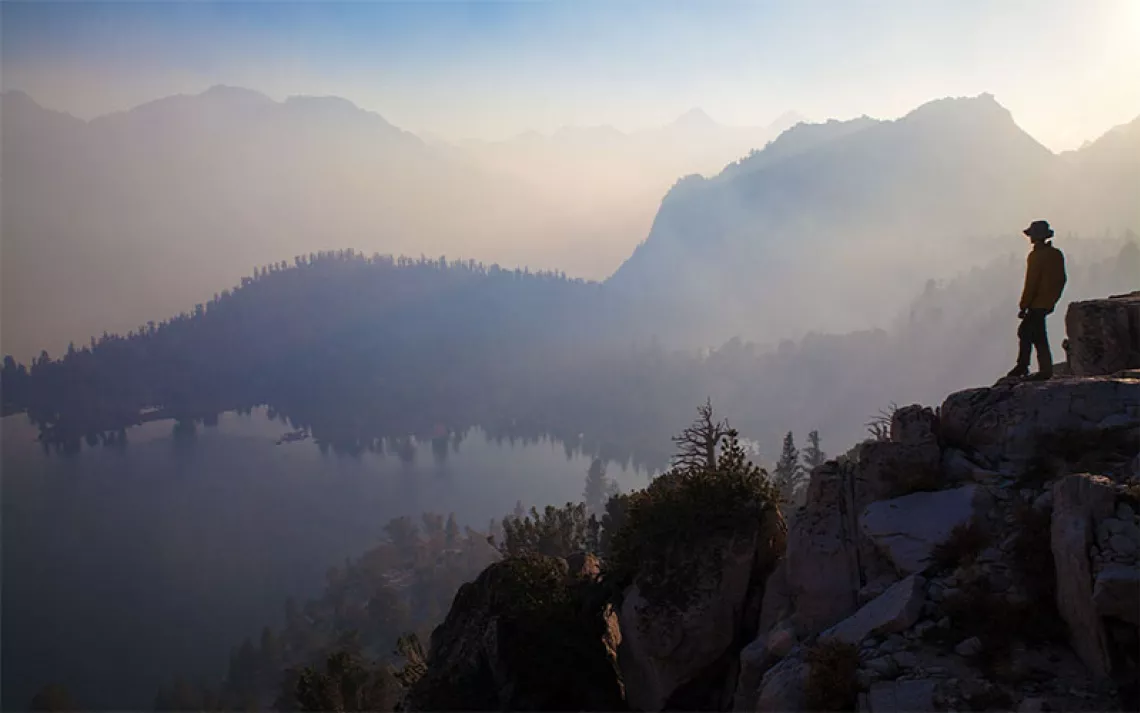Lack of Funding, and Political Will, Threaten Restoration of the Everglades
A new report says efforts to restore the Everglades need to integrate more data about climate change

Photo courtesy of Everglades National Park
On December 2000, a bipartisan Congress passed one of the biggest environmental projects in U.S. history. Jeb Bush, then governor of Florida, even attended a ceremony in the White House Rose Garden as President Bill Clinton signed the Comprehensive Everglades Restoration Plan (CERP) into law. The 30-year, $8.2 billion project aimed to return the flow of freshwater through the Everglades, and restore the massive south Florida tropical wetland as well as Florida Bay and the Bay of Biscayne. During the first few years of CERP, many of its projects were fully funded, and the Everglades restoration got off to a quick start.
But over time, money, political cooperation—and even more of the Everglades—has dried up. At its halfway point in 2014, an assessment by the Congressional Research Service found that only 20 percent of the projects authorized in CERP had received funding. At the current rate of progress, it would take 100 years to complete the program. Even with a substantial funding increase, it would still take 50 years to “re-plumb” the Everglades. But research suggests that the Everglades may not have that long to wait—especially since climate change is altering its ecosystems faster than expected. In fact, a new biennial review by the National Academies of Sciences says plans for the Everglades didn’t really take climate change into account in the first place.
Fernando Miralles-Wilhelm, a professor of atmospheric and oceanic science at the University of Maryland who coauthored the sections of the review dealing with climate change, says that the original science behind CERP missed many of the alterations to sea level and rainfall caused by climate change. “We reviewed the science being used for restoration and examined whether that science was sound and whether every effort was being made to incorporate the latest science,” Miralles-Wilhelm says in a statement. “That’s when we realized climate change had not been considered in the original CERP and may be the reason why the system cannot handle increasing conditions of drought or flooding.”
Going forward, CERP projects need to reassess their goals to account for increasing sea levels and other climate-driven impacts. Climate change is already impacting the Everglades as recurring droughts over the last decade have reduced freshwater even more, and sea level rise has pushed saltwater into the wetlands, increasing the salinity of the ecosystems. According to data from the Long Term Ecological Research Network at Florida International University, which has monitored the Everglades for the last 16 years, the Everglades has reached a tipping point where changes to its ecosystems are happening faster than anticipated. Mangroves, a woody plant community that thrives in saltier water, are starting to encroach on the Everglades' grassier freshwater marshes. So many acres of peaty Everglades soil is drying out and collapsing into the sea that the changes are measurable from satellite images.
Sonali Saha, a senior biologist with the Institute for Regional Conservation, a 35-year-old conservation group that supports research into the plants of south Florida, has studied the impacts of increasing salinity on different Everglades ecosystems. While some hardy species seem to tolerate and even adapt to increasing salinity, some plants are barely holding on, Saha says. “There are many plants doing this tightrope walk on the edge of their salinity tolerance,” she says. “They get their water from the upper centimeters of soil, so they might get impacted if winter rainfall patterns shift.”
The CERP projects that would bring more freshwater into the ecosystems would help keep some of those changes at bay, but they need to happen soon, Saha says. “Big projects could bring more freshwater to the system to halt the saltwater from encroaching, but if you are going to take 50 or 100 years to do it, it doesn’t look so good.”
Doug Young, COO of the South Florida Audubon Society, has worked on the Everglades restoration and climate issues for the last decade. He doesn’t see the government picking up the pace any time soon. The political will to fund Everglades restoration has dissipated, despite the fact that many politicians still support the project. Though half a dozen major projects are currently underway, funding for those and future projects is unreliable. “The solutions to fixing these problems are known,” Young says. “The problem is there is no longer any leadership at any level—local, county, state, and now who knows federally.”
According to Leornard Pearlstine, a landscape ecologist and climate change expert at Everglades National Park, it’s hard to model some of the climate impacts that south Florida will experience in the future because it’s a peninsula. Instead of preparing for one climate change scenario, he says, Everglades restorers will need to model several different possibilities, since it’s uncertain if the area will suffer more droughts or see increased rainfall.
Whatever happens, he says, climate change will undoubtedly reshape the area. “The Everglades has always been changing, and with climate change and sea level rise, we will no doubt have a different place than we had 100 or 50 years ago,” he says. “That doesn’t mean it has to be a bad place.”
The new report says current CERP projects should continue going forward, and that their goals should be revised based on the latest climate science and new information about how the Everglades function. Pearlstine says he is cautiously optimistic about the prospects for the Everglades, and sees some slow but sure progress. For instance, construction is slated to begin soon on a new 2.6-mile, $180 million bridge on the Tamiami Trail, a U.S. highway that has prevented water flow into the Everglades for decades.
The future of the Everglades, Pearlstine says, depends on how quickly projects like these progress. “I think in 60 years, we’re going to have a lot more estuary down south,” he says. “That estuary could be a really vibrant, wonderful place full of diverse habitat if we do a good job getting and maintaining freshwater. The other possibility is we have rapid change due to storm surges, sea level rise, and drought leading to degradation of large areas.”
 The Magazine of The Sierra Club
The Magazine of The Sierra Club



